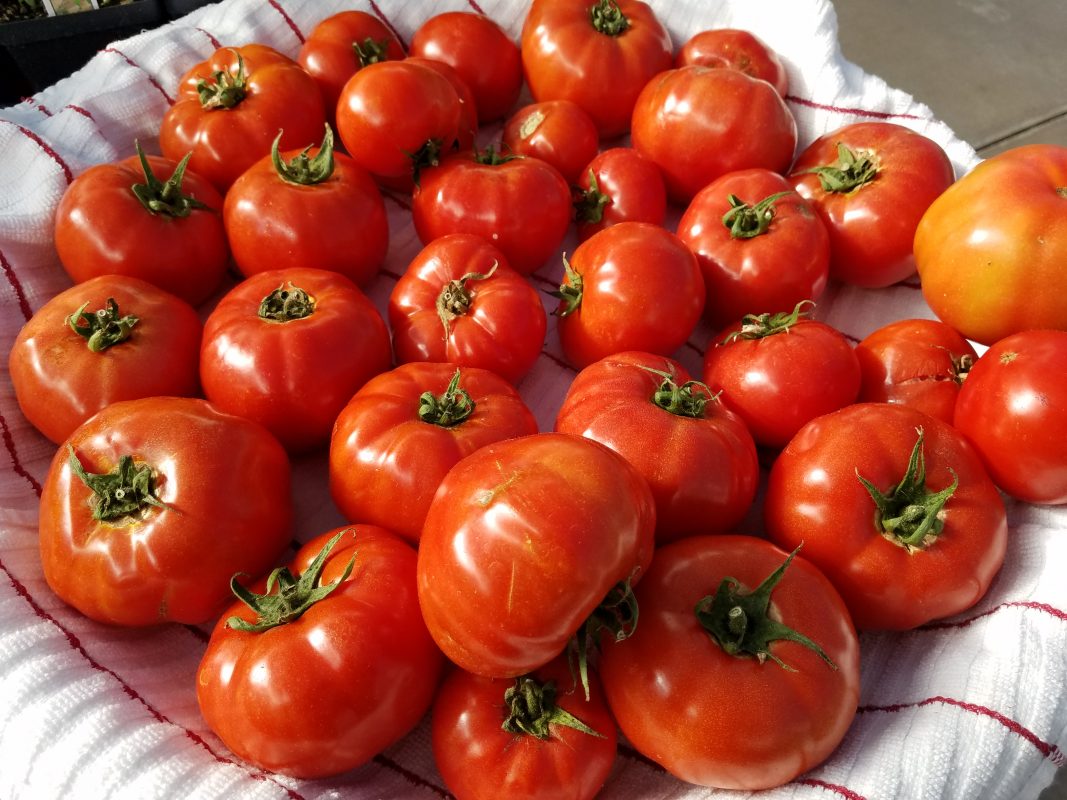If you are like many of us, you are starting to plant your vegetable garden right about now. One of the most popular vegetables are homegrown tomatoes and what a summer delight they are! Rich, robust, juicy tomatoes straight from the garden can’t be beat, yet many people don’t know how to properly plant and care for them to ensure the most abundant crop.
Begin by selecting a good location with well drained soil or amend the existing soil by adding compost, peat moss, top soil, or potting soil. Tomatoes love heat so a spot that receives full sun all day is ideal. Another way to cheat Mother Nature this year is to preheat the soil by covering your planting area with black or red plastic for a few days before you plant. This will warm up the soil and although you can plant them and they will survive, they won’t really thrive and root in well until the soil warms up.
An alternative to planting tomatoes in your garden, is to plant them in the largest pots you can find. We tried this a few years ago on a whim, but found that we liked the fact that we could move them around and it was much less back breaking at harvest time. It’s also a good way to garden if all you have is a porch or patio and still want to enjoy fresh tomatoes. I can’t emphasize how important it is to choose a good potting soil if you are planting them in a pot. I’ve seen many problems arise from using cheap soil and in the end I just don’t think it’s worth it. Adding Soil Moist or other polymer crystals to the pot at this time will help with watering chores through the summer, so we recommend that too.
Once you’ve purchased your plants, plant them deep in the soil, and I mean really, really deep. You want to bury one half to two thirds of the plant. I know this runs contrary to what you’ve always heard about how burying a plant too deeply will kill it but there are good reasons to do this with a tomato.
Tomato plants are one of the few plants that develop roots out of their stems in addition to the roots that are on the bottom when you buy the plant. Perhaps you’ve seen little nodule like bumps on the stems when you’ve shopped for your tomatoes. No, that isn’t a disease, but is where that plant is beginning to develop new roots and actually means that plant is quite healthy. So you want to be sure all of those nodules are buried when you plant it. You can even plant the tomato horizontally by laying it on it’s side if your garden hasn’t been rototilled deeply enough to accommodate planting it vertically. If you plant it this way, don’t worry- the plant will straighten up and grow just fine with a little sun and water, especially if you stake it or use a tomato cage.
The second reason you want to plant them deeply is because that as these roots form, they will anchor the plant that will be heavy with fruit later in the season. You also want the stems to be robust and thick and planting them deeply will eliminate the thin, leggy stems that form on the bottom of many seedlings. Mulching after planting will help with water retention and also will help retain warmth if we have a cool evening.
Water and fertilize on a regular basis. These are plants that need to be watered deeply and regularly for the fruit to develop well. The most common problem that we see in this area is blossom end rot which is when a large, brown, rotten spot develops on the end where the blossom was. It is caused by a calcium deficiency and can be prevented by choosing and using a fertilizer regularly that is high in calcium.
The best food in the world is picked straight from your garden, ripe and still warm from the summer sun, served with very little done to it. Go from store bought ordinary to garden fresh extraordinary this summer because John Denver really was right- “there ain’t nothin’ in the world like homegrown tomatoes.”

